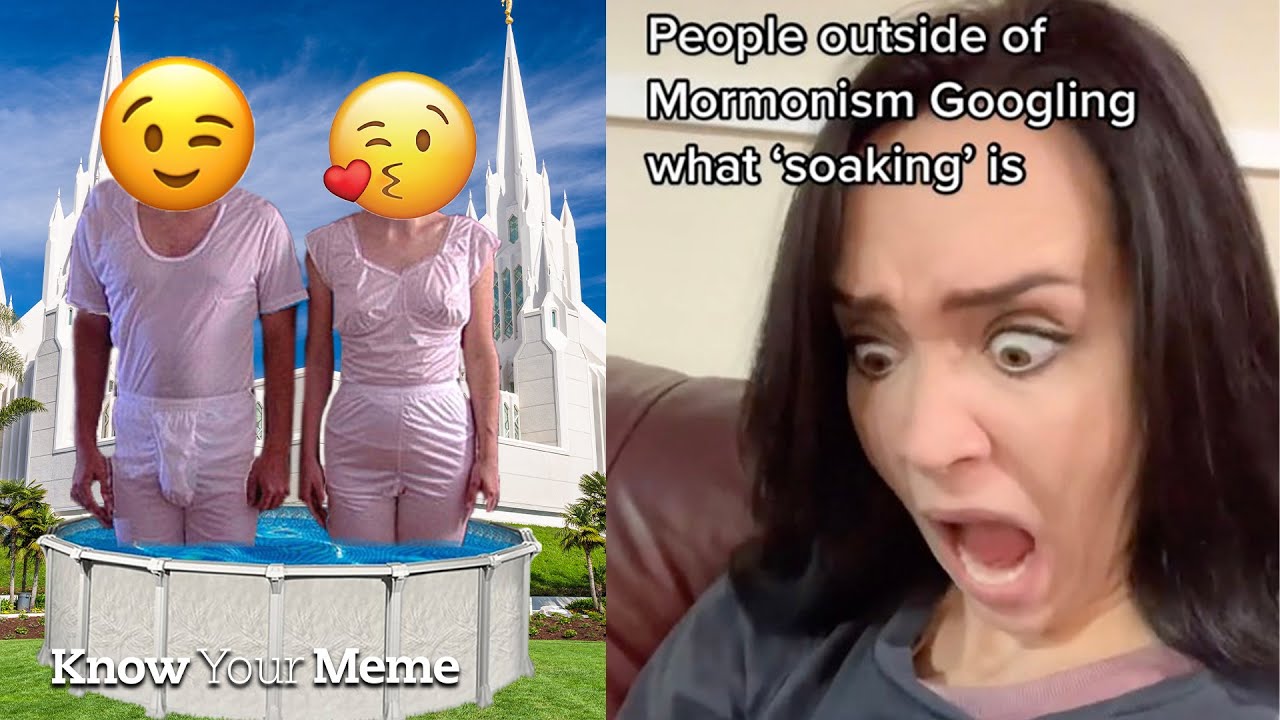Mormon Soaking

In the realm of religious practices, certain rituals and behaviors often garner attention for their unique nature, sparking discussion and sometimes controversy. One such practice that has emerged within the context of the Mormon community is known as “Mormon soaking.” This phenomenon has raised eyebrows and generated curiosity both within and outside of the Mormon faith. In this article, we delve into the origins, meaning, controversies, and cultural implications surrounding Mormon soaking.
Table of Contents
ToggleOrigins and Definition
To understand Mormon soaking, one must first grasp its definition. At its core, soaking involves a sexual activity where individuals engage in penetrative intercourse without any movement. In other words, it’s the act of inserting the penis into the vagina without thrusting or any intentional movement. The term “soaking” itself implies a passive and motionless state.
The practice gained notoriety primarily within the Mormon community, particularly among young adherents who sought to navigate the complexities of their faith’s teachings on sexuality. It is important to note that the term “Mormon soaking” specifically refers to individuals within the Mormon faith, but similar practices may exist in other religious or cultural contexts.
Religious and Cultural Context
Mormonism, formally known as The Church of Jesus Christ of Latter-day Saints (LDS Church), holds strong beliefs regarding chastity and sexual purity. Adherents are encouraged to abstain from premarital sex and to engage in sexual activities only within the bounds of marriage. However, the specifics of what constitutes sexual activity and the boundaries of chastity are not always explicitly defined.
Within this framework, Mormon soaking arises as a response to the desire for physical intimacy while adhering to religious guidelines. By engaging in soaking, some individuals believe they can experience closeness and intimacy with their partners without technically violating the law of chastity. It represents an attempt to reconcile the natural human desire for physical connection with the religious principles they hold dear.
Controversy and Debate
Despite its proponents’ intentions, Mormon soaking has sparked significant controversy within and beyond the LDS community. Critics argue that the practice skirts the boundaries of moral behavior and represents a loophole rather than genuine adherence to religious teachings. Some view it as a form of deception or rationalization rather than a sincere expression of faith.
Moreover, there is debate within the Mormon community itself regarding the acceptability and appropriateness of soaking. While some individuals may see it as a harmless way to navigate the complexities of human sexuality and religious doctrine, others condemn it as a violation of the spirit, if not the letter, of the law of chastity. The lack of official guidance from church leaders further complicates the issue, leaving individuals to interpret and justify their actions on their own.
Psychological and Emotional Impact
Beyond the theological and ethical considerations, soaking also raises questions about the psychological and emotional impact on those who engage in it. Intimate relationships are complex and multifaceted, influenced by cultural, religious, and personal beliefs. For some individuals, soaking may provide a sense of intimacy and connection within the confines of their faith, while for others, it may lead to feelings of guilt, shame, or confusion.
Additionally, the lack of communication and mutual understanding inherent in soaking relationships may contribute to misunderstandings and emotional strain. Healthy relationships often rely on open communication, mutual respect, and shared values, elements that may be compromised in soaking dynamics.
Conclusion: Navigating Faith and Sexuality
Mormon soaking represents just one example of the intersection between religious beliefs and human sexuality. It highlights the complex ways in which individuals seek to reconcile their faith with their natural desires and impulses. While some may view soaking as a creative solution to a challenging dilemma, others see it as a symptom of a larger issue within religious communities: the tension between doctrine and human experience.
Ultimately, the practice of soaking raises important questions about the nature of morality, religious authority, and personal agency. As individuals grapple with these questions, it is essential to foster open and respectful dialogue within religious communities and society at large. By acknowledging and addressing the complexities of human sexuality and faith, we can work towards greater understanding, empathy, and acceptance for all individuals, regardless of their beliefs or practices.





